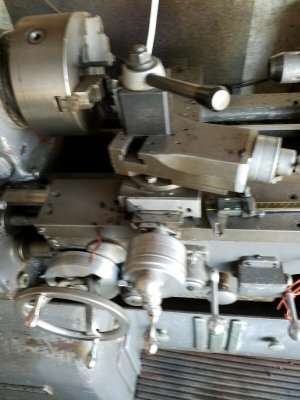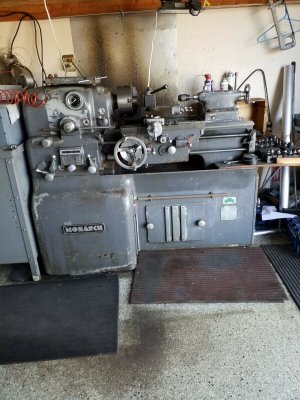Obviously a complete description of the 10EE and its maintenance is beyond a single post ... Practical Machinist has a wealth of information on the 10EE, but isn't the friendliest forum, especially for newcomers.
Chuckled at that.
Much appreciated the insights as well as a friendly head's up.
I've done some reading there - and know there is a community of highly knowledgable.
A few very nice restores have been done and documented.
Fingernail test: The ways of a Monarch lathe are hardened, but will still wear. A problem with the carriage oil system will accelerate this. The front inverted V, on the surface toward the inside of the bed, is the surface most prone to wear. Often lathes are used with toolpost fairly close to the chuck, so the wear occurs more there. You can use a fingernail to feel for any slight ridges from wear, and compare along the length of the bed as the extreme ends are unlikely to have worn.
Much more likely to experience wear is the underside of the carriage since it is not hardened. This typically causes the V way to widen near the ends, so that the carriage "racks" slightly, that is it sits at a very slight angle that changes depending on which move the carriage.
This will be an area of focus.
$3300 for a 10EE in our area is a low price.
I expect the machine would need restoring - and would not have a conversion drive system in it. Agreed.
With the cryptic one sentence description, non-responsive seller, and added risk of being an Ebay listing, I decided to...
Buy it sight unseen.
Yup. Pushed the "buy now" button and got the confirmation.
But before anyone jumps to the obvious conclusions about the uncareful nature of my approach, there were some extenuating circumstances I offer in my defense.
- I am not really putting the entire $3300 at risk - just feels that way. The true risk is mostly my time. The parts alone could likely fetch some if not all of that asking price back for me.
- At this price - someone will scoop it quickly. Had the seller been responsive - I suspect other's would have already snagged it.
- I have a 3 month truck lease coming to an end in a few weeks. It's a 2500 deisel ram that can easily tow this home - while I still have the truck. I've recently moved a 4300 lb mill - so I have a sense of the challenges.
- I really want a 10EE...
Seller has not confirmed the purchase - so this all may be moot and I may never see it - but Ebay will protect my money if that's the case.
If I pick it up and find it's just too worn out or too big a project - I will re-sell to someone who wants to dive in deeper - hell, I could just keep it on the trailer and deliver it.
So my plan, assuming the seller confirms the sale, is to pick it up, then inspect it.
Ways and drive system are my two largest concerns.
Will start a thread and ask for some help in ascertaining it's viability.
Sound's backwards - but there is some method to my madness.
-CM





